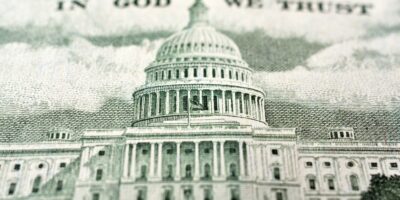The Soul of Economics Is the Market Process

Transaction costs are a big deal in economics. A really big deal. First discussed formally by Ronald Coase, who won the Nobel in economics in 1991, these costs are basically barriers to trade. They invoke the idea that markets are costly to use and that the institutional arrangements that we devise (e.g. laws, firms, families, organizations, charities, etc.) are meant to generate the most wealth net of these costs. The very idea of transaction costs has had a profound effect on the economics profession as, according to some, it spoke to why seemingly “inefficient” arrangements could persist and actually be the best available arrangements.
However, they also entail something else that is probably of greater importance. Transaction costs are barriers to trade that make us poorer than we otherwise would be (as they constrain our choices). But, because they are barriers to trade, transaction costs generate incentives for their own reduction. If they are reduced, they unleash new potential exchanges that increase wealth. This is why Ronald Coase once said that “the provision of markets is an entrepreneurial activity and has a long history.”.
Notice a subtlety here. Rather than taking transaction costs as the endpoint of analysis, we take transaction costs as the starting point. When this is done, we can observe entrepreneurs at any point in time find the most efficient solutions available to them while they also look for equally efficient (but less constrained) arrangements at later points in time. That, at the very least, is the case that we lay out in a recent article in the European Journal of Law and Economics.
At first glance, this may seem like a trivial point to make. However, first glances can be deceiving. This point speaks to the heart of what defines the craft of the economist.
When economics is taught at more advanced levels in colleges and universities, the bulk of the emphasis goes to explaining how people maximize under constraints and how this creates equilibriums. The mathematics involved with those teachings are used largely for pedagogical purposes. They are necessary for students to deal with theoretical abstractions so that they can train their minds to reason with “all else being equal” Absent these theoretical foundations that are rooted in pedagogical purposes, one will struggle to master the craft of economics.
This is what Ronald Coase called “blackboard economics” to refer to the imaginary world that we create for pedagogical purposes. The danger with “blackboard economics” is that it becomes easy to simply take the assumptions for granted rather than do “applied work” that tests their relevance.
This latter sort of work is crucial in forcing economists to ground themselves in the real world to assess the relevance of what was drawn on the blackboard. Going too much in the direction of doing applied work without theory offers a downside too. When it happens, one begins to operate without theory which makes his findings ungeneralizable and, by definition, without relevance.
The balance to strike between the two is what we are trying to argue for. By starting from existing transaction costs, we assume that people found the best possible arrangements given those costs. However, by arguing that economic actors are forward-looking, we are also making the case that these actors are finding ways to unlock previously unavailable exchanges by reducing these costs. This is what economist Israel Kirzner called the “entrepreneurial market process”.
The study of the “market process” is the very essence of what it means to do economics. It means that one must wield the tools of economics without being afraid to do applied work (either through empirical work, analytical narratives, economic history or experimental settings). This ties the theory to real-world relevance which, simultaneously, gives relevance to empirical work.
However, and most importantly, this study of the market process is the study of how humanity got richer. Long periods of stable income or stagnant living standards are simply prolonged equilibriums. They are not without interest. However, they pale when compared with the skyrocketing increase in living standards that began circa 1800. The process of economic change is about how economic actors invest to alleviate the constraints they face by reducing transaction costs in order to grow richer.
The study of the process of creating markets is the soul of economics.
Rosolino Candela is the co-author of this piece










